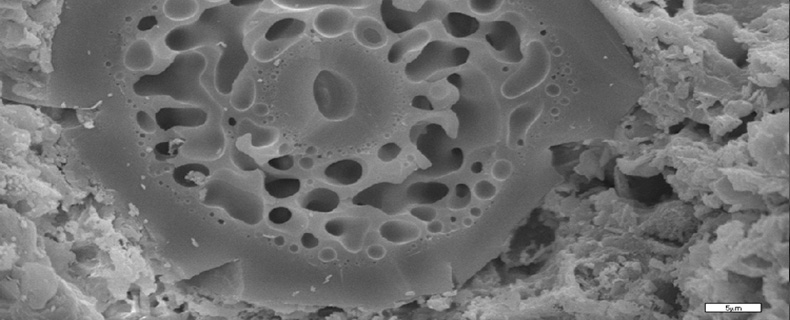| School |
Natural Sciences |
Academic Unit
|
Geology Department |
Level of Studies
|
Undergraduate |
Course Code
|
GEO_601E |
| Εξάμηνο σπουδών |
7ο |
Course Title
|
Μagmatism in the Hellenic Region |
Independent Teaching Activities
|
Lectures, laboratory work, Tutorial |
Weekly Teaching Hours
|
2 (lect.), 1 (lab.), 1(T) |
| Credits |
5 |
Course Type
|
Field of Science (Petrology) and Skills Development (characterization of the magmatism in a specific area and identification of the magma emplacement processes |
Prerequisite Courses
|
Typically, there are not prerequisite course.
Essentially, the students should possess:
(a) knowledge provided through the previously taught theoretical course of ‘'Petrology of Igneous and Metamorphic Rocks”.
(b) laboratory skills obtained through the previously attended laboratories included in the course of ‘'Petrology of Igneous and Metamorphic Rocks” |
Language of Instruction & Examinations
|
Greek. Teaching may be however performed in English in case foreign students attend the course. |
Is the Course offered to Erasmus Students
|
Yes |
| Course Web-Page (URL) |
https://eclass.upatras.gr/courses/GEO388/ |
Learning Outcomes
|
By the end of this course the student will be able to:
- Understand the distribution and petrogenesis of igneous rocks within the Hellenide orogen
- Develop skills for writing a scientific report on magmatism and the igneous rocks of an area
By the end of the course the student will have further developed the following skills/competences:
- Capability of using the polarizing microscope for recognizing the igneous processes through the study of thin sections of igneous rocks.
- Develop skills needed for the interpretation of igneous processes within the Hellenide orogen and its relations with adjacent regions and their geotectonic regime.
|
General Competences
|
By the end of this course the student will, furthermore, have developed the following skills (general abilities):
- Ability to exhibit knowledge and understanding of the essential facts, concepts, theories and applications which are related to the processes of magma emplacement at a specific area.
- Ability to apply this knowledge and understanding to the solution of problems related to the igneous processes in the Hellenic region.
- Αbility to adopt and apply methodology to the solution of non familiar problems of other igneous provinces
- Study skills needed for continuing professional development.
- Ability to interact with others in issues concerning the igneous processes in an area and its relation to the wider geotectonic regime.
Generally, by the end of this course the student will, furthermore, have develop the following general abilities (from the list above):
- Searching, analysis and synthesis of facts and information, as well as using the necessary technologies
- Autonomous (Independent) work
- Group work
|
| Syllabus |
Lectures
- Geological and igneous evolution of the Eastern Meditteranean area
- Triassic magmatism
- Genesis of the Neotythean crust
- Subduction and arc volcanism
- Collision tectonics
- Tertiarry nappe tectonism of the Hellenides
- Neotectonic phases
- Aegean Volcanic arc
Laboratory work
- Igneous petrological characterization study of sets of thin sections from the main igneous provinces of the Hellenides
|
| Delivery |
- Lectures, seminars and laboratory work face to face.
- Lectures: using slides for overhead projector and/or power-point presentations.
- Open eClass - Asynchronous eLearning Platform: storage and presentation of teaching material.
- Laboratories: Students are assigned a thin section suite to work out an essay on the metamorphic conditions and processes of a specific study area.
|
Use of Information & Communication Technology
|
- Use of Information and Communication Technologies (ICTs) (e.g. powerpoint) in teaching. The lectures content of the course for each chapter are uploaded on the internet, in the form of a series of ppt files, where from the students can freely download them using a password which is provided to them at the beginning of the course.
- Use of polarizing microscope employed with a digital camera for capturing and analyzing representative images through the use of specialized software packages (ProgRes CapturePro 2.9.0.1 by JENOPTIC)
|
Teaching Methods
|
| Activity |
Semester workload |
| Lectures (2 conduct hours per week x 13 weeks) |
2 x 13=26 |
| Laboratory work (1conduct hour per week x 13 weeks) – recognizing the igneous processes through the study of thin sections of igneous rocks by means of polarizing microscopy |
1 x 13=13
|
| Tutorial |
1 x 13=13 |
| Bibliographic research |
1 x 13=13 |
| Sample preparation for their study in the laboratory |
1 x 6=6 |
| Hours for private study of the student and preparation of home-works and reports, for the Laboratory, and preparation for the Laboratory (study of techniques and theory) |
3 x 13=39 |
| Weekend hours for private study of the student and preparation of home-works and reports, for the Laboratory, and preparation for the Laboratory |
1 x 13=13 |
| Hours for private study of the student during the week available for exam preparation and two weeks of holidays |
2 x 3=6 |
| Total number of hours for the Course |
129 |
|
Student Performance Evaluation
|
- Written examination (50% of the final mark)
- An essay comprising the outcome of the exercise assignments on the igneous conditions of a specific study area (50% of the final mark).
Percentages are valid t only when the student secures the minimum mark of 5 in the final written examination
Greek grading scale: 1 to 10. Minimum passing grade: 5.
Grades <3 correspond to ECTS grade F.
Grade 4 corresponds to ECTS grade FX.
For the passing grades the following correspondence normally holds:
5 <-> E, 6 <-> D, 7 <-> C, 8 <-> Β and >9 <-> A |
Attached Bibliography
|
Suggested bibliography:
- Notes of lecturers in Greek.
- Various relevant scientific papers
Related academic journals:
- Journal of Petrology
- Bulletin of the Geological Society of Greece.
|






























